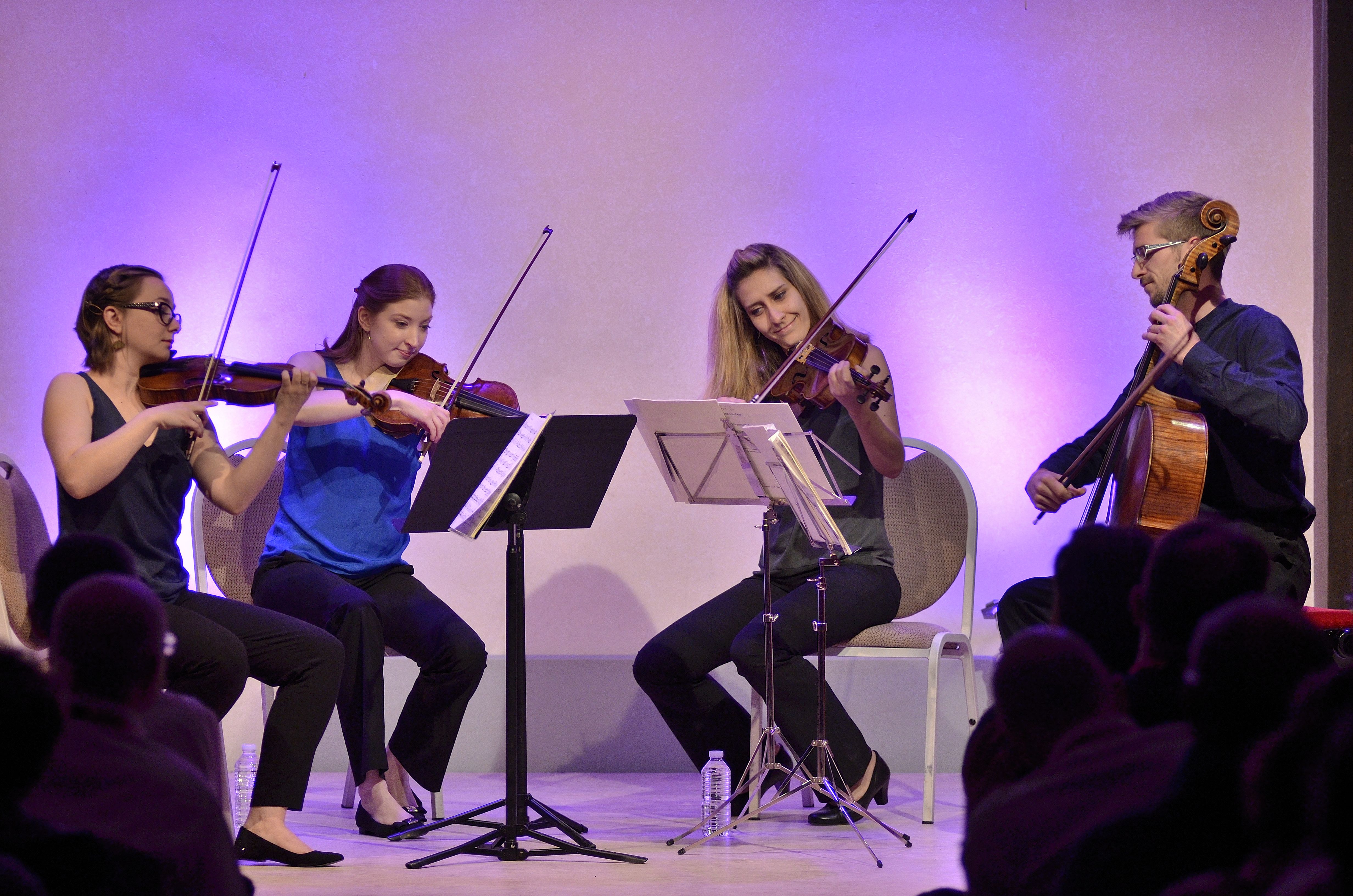[dropcap]T[/dropcap]he Utrecht skyline may have changed dramatically since I last attended the early music festival, but some things remain reassuringly familiar – the friendliness and helpfulness of the Dutch, the wonderful array of foreign cuisine available to visitors, the quaint old buildings in the middle of the Netherlands’ fourth largest city and – most important of all – the fantastic quality of the concerts!
I was fortunate enough to enjoy several events on the last weekend of the festival which this year was devoted primarily to Venice. An hour or so after being guided to my extremely comfortable hotel (a stone’s throw from the main railway station and a brief walk from the main focus of the festival, the city’s amazing multi-space music venue, the Vredenburg), I attended one of the Eventalks, a series of diverse seminar-like lectures covering a broad spectrum of topics related to the theme of the festival and framed by music. Sandra Ponzanesi‘s “Postcolonial Italy: Quo vadis?” sought the roots of at least some of the current migrant crisis in Italy’s rather tardy forays into the European land grab in Africa; the suppression of native cultures and denial of education (typical of all colonial powers) and later generations’ acceptance of responsibility for such actions adds another level of meaning to how the death toll amongst aspiring migrants risking the crossing to an Italian island (the closest outreach of Europe to the Libyan coast) is perceived not only in Italy but elsewhere in the world. Olga Pashchenko introduced and followed the talk with a nicely contrasted selection of harpsichord music by Bernardo Storace.
Later even that planned, my second musical event of the evening was a concert of Monteverdi by Cantar lontano, directed by Marco Mencoboni. As an earlier concert had overrun, we were obliged to wait for a while before we started, but the organisers very kindly laid on liquid refreshments – though it seemed a great idea at the time, as the minutes ticked by and the red wine kicked in, the likelihood of falling asleep became a very real one… Finally we started a little over half an hour late; however, barely had the first segment ended than another large crowd joined the audience, so the first piece was reprised to welcome them! This was followed by the Lamento dells ninfa, one of the composer’s (rightly!) most popular pieces. If the singing was dramatic, there was something of Monteverdi’s own instruction missing – while the three men’s voices are to keep time with the descending continuo bass, the soprano (who here had the most glorious voice!) is instructed to sing rather more freely, as if agitated by the letter she is supposedly reading. Similarly in Il combattimento that followed, Tancredi and Clorinda (the protagonists of the work) were placed on opposite sides of the stage, facing outwards and rarely interacted with one another; the narrator, on the other hand, wandered around the stage – at times looking rather manic, if I’m honest – but giving the most passionate delivery of the wonderfully expressive text I have ever heard; indeed, although my lady friends had a particular interest in one of the lutenists, for me Luca Dordolo as Il testo was the star of this show. Another highlight was the virtuoso wide-ranging voice of the bass, and the pointed dissonant chords in Hor ch’el ciel.
On Saturday morning, I joined a guided tour of the Dom tower where the town carillonneur, Malgosia Fiebig, gave an amazing recital including three of Vivaldi’s Four Seasons. Climbing more than 100m above the city was a thrill in itself, with the history of the building explained along the way. Then, after she played another concerto by Il prete rosso, she explained how, as well as the automated quarter hourly tones, the instrument can, and is, regularly used for recitals. The physicality of playing the carillon has to be seen to be believed, and yet she was able to coax different dynamic levels from what seemed an uncompromising instrument – it was very impressive!
One of my Utrecht hosts then took me and a colleague on a boat trip around the Utrecht canals with Wineke van Muiswinkel, one of the organisers of JACOB 3.0 (about which more HERE), which was a nice way to find out more about the city’s rich history. More of the afternoon was spent on touristy activities (including a trip to the charming Spelklok Museum – its motto “the most cheerful museum in the Netherlands” says it all!) and then I took in the various stalls at the early music trade exhibition in the Vredenburg. Mostly these consisted of instrument makers, but there were a couple of publishers, some music/book shops, and one promoting Alexander Technique.
The main event in the evening was Ensemble Correspondances, directed by Sébastien Daucé, exploring Charpentier’s time in Italy and its possible influence on his own music. This required a very large ensemble, since the main work in the second half was his mass for four choirs, which were assembled in four corners of the centrally placed main stage. They had ended the first half with other four-choir music but two of the choirs had been elevated to opposite galleries for this which gave an entirely different aspect to the music due to dynamic variation between the groups. Other music included a psalm setting for solo bass with violins, a motet for two sopranos with cornetti, and – for me the pinnacle of many high points – a portion of Legrenzi’s sequence for the dead which, as I have commented before, in at least one movement sounds more French than Charpentier’s himself; perhaps that is why it drew these performers’ attention? While I shared my friends’ overall delight with a fabulous concert, I had reservations about the orchestration of such music (not only doing so at all, but the actual choice and numbers of instruments, and – for example – the allocation of cornetti to double soprano lines of the two “less important” choirs), and I found the constant relocating of players and singers around the space distracting (especially for an encore).
The first half of Sunday was devoted to Jacob van Eyck. Well known by recorder players in the UK (where his increasingly virtuosic variations on popular tunes of his day often feature on exam syllabi) but unfamiliar apparently to the majority of Utrechters (as well as entertaining the population in a local park with his playing, he was among the city’s first carillonneurs!), van Eyck has largely been put on the map by Dr Thiemo Wind. He led a guided tour of the principle locations associated with the composer, explaining the history of the city as he went and offering contemporary images of the city that van Eyck never saw – he was blind! A rather special moment was Wind’s rendition of a set of variations on “What shall we do in the evening?” in the beautiful cloisters of the Domkerk.
A couple of hours later van Eyck’s music provided the inspiration for a new project, JACOB 3.0 – check out my review HERE.
The afternoon concert that I opted to go to was given by Cappella Romana, directed by Alexander Lingas, in the Willibrordkerk. The programme featured sacred music for the imperial Russian chapel by composers during the reign of Catherine the Great. Two not especially well-known Italians, Baldassare Galuppi and Giuseppe Sarti, were interspersed with pieces by Berezovsky and Bortnyansky and other slightly later Russian composers. The music was only occasionally formulaic in the sense that there were verses and responses – sometimes, rather oddly for unaccustomed ears, simultaneously. Otherwise, these were fine motets, beautifully sung by twelve voices, with solos all taken by members of the choir. If there was something that I missed it was the dark vowels typical of that part of the world, and the lack of any excursions off the bottom of the bass clef which are so typical of later orthodox music. And while it was technically impressive that the huge conference booklet reproduced the Old Church Slavonic texts in their beautiful script, perhaps a transliteration might have been a more useful addition to the Dutch translation.
After yet another delicious curry from NAMASKAR (a fantastic Indian place directly opposite the music venue!) I went to my second Eventalk, this time a very brief discussion of two early republics – the Venetian and the Dutch. James Kennedy touched on aspects of both that modern republics might like once again to consider adopting; honesty (the concept of which, he told us, was a renaissance extension of the notion of honour which came about through the development of international trade), compassion for the poorest in society (for both the Venetians and the early Dutch this was considered an obligation) and a sense of communal agreement in the political sphere – decisions should be made by discussion and compromise for the greater good of society at large, rather than a few vested interests. As usual, the talk was framed by keyboard music, once again nicely played (on organ and harpsichord) by Olga Pashchenko.
Then it was time for the very last concert of the season. Festival director Xavier Vandamme gave a very brief introduction, confirming that the 2016 was the most successful Festival oude muziek in recent years, with ticket sales up over the past seven years by an incredible 80%!
There is a tradition of saving the best till last and in Le concert spiritual and the consummate showman Hervė Niquet, Utrecht certainly did that. Vivaldi with only women’s voices was the theme; not a new idea, of course, but there were slight differences in approach here. Not only were the tenor and bass parts transposed up an octave, but the solos were all sung chorally (so even those who sang tenor in the chorus also sang the solo soprano parts, etc.). The concert was exhilarating – tempi were brisk, the singing was fabulous, the instrumental playing was incisive and Niquet took every opportunity to play with the audience – which they lapped up and afforded him (of course) a standing ovation. Yet, from a musicological point of view, or even a HIP perspective, there were deficiencies, too – where were the wind instruments? (That said, I doubt if a baroque trumpeter could have played the final movement at such a speed!) If all the voices sing the solos, why don’t all the cellos play the continuo part? Why did one from each orchestra play some? Why were there even two orchestras, when only one work required that layout? One might argue that none of that matters, but if the programme notes ask “Does this mean we more closely approach Vivaldi’s intentions?”, such aspects of performance practice must be brought into question.
But let’s not end on a negative note! These were two and a half days of fairly hectic activity – though the festival and its fringe events offered many, many more! – giving a taste of music and life in Venice and its influence in musical history from Willaert (one of the feature composers, though I did not manage to hear any, alas…) to Catherine the Great’s Russia. Terrifically well-attended concerts, with deeply appreciative audiences and an army of ever-smiling, always helpful festival staff – Utrecht, thank you; it was an absolute pleasure!
Brian Clark
Thanks to the following for arranging my visit:
- Residenties in Utrecht
- Festival Oude Muziek
- Gaudeamus Muziekweek
- Culturele Zondagen
- Centre for the Humanities
- Tourisme Utrecht
And on a personal note, I’d especially like to thank Marthe van der Hilst, Lidy Ettema and Juliëtte Dufornee for making my stay such fun!


